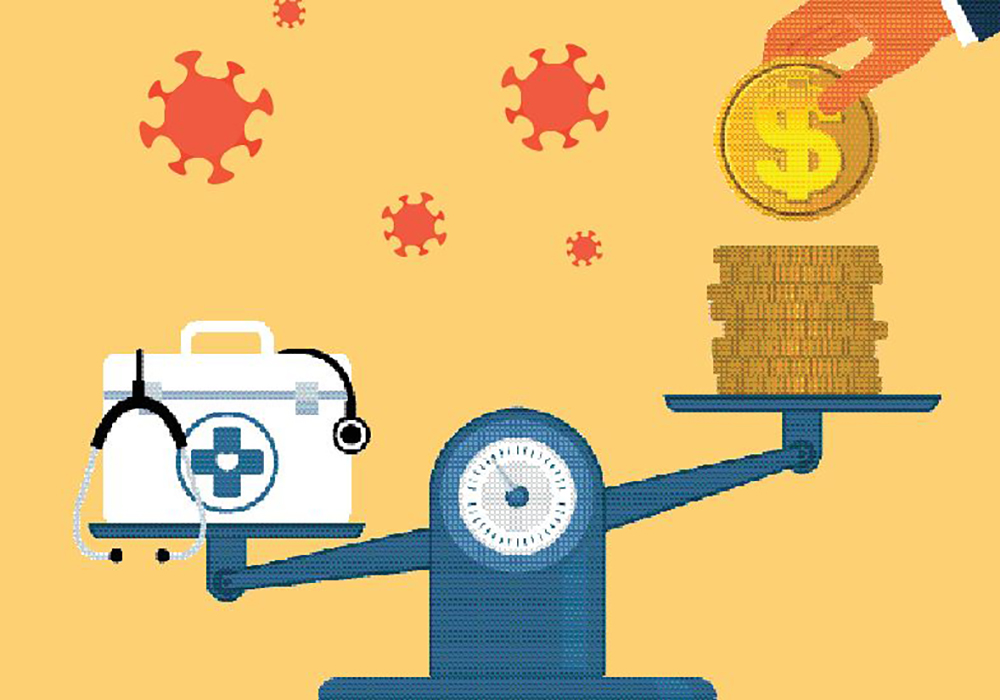Cancer is one of the top five most expensive healthcare conditions to treat, costing the United States more than $157 billion annually. The payout from patients’ pockets may be even greater, with the cost of cancer medications alone standing at $895 billion per year. But paying for cancer during a pandemic? Even financially secure patients with healthcare coverage are struggling.
Today, the Energy and Commerce Committee passed 12 bills with overwhelming bipartisan support that will invest in the health and safety of the American people and help revitalize our economy. These bills will foster important medical research that will save lives, provide resources to bolster the health care workforce on the frontlines of the COVID-19 pandemic, and increase access to auditory and oral health programs to keep our children and families healthy.
Across all healthcare spending, the United States pays $9,523 per person annually—more than $1 trillion, 17% of the gross domestic product, and 27% of its total budget. Federal healthcare spending costs more than military, food and agriculture, education, transportation, and international affairs spending combined.
There’s no question that health care and cancer care are expensive, but the cost of COVID-19 is widening the gap in disparities and access to care for patients with cancer. No one wants to see the messy process of making sausages or legislation, but for both the results can be delicious. While oncology nurses provide patient-centered care for patients’ physical and psychosocial health, policymakers must open up that sausage casing and create legislation that better supports patients’ financial health.
Healthcare Spending on COVID-19
Broadly, every elected official supports affordable, accessible health care for all. The devil, however, is in the details, and that’s where they differ. What kind of programs? Who is covered? How are they covered? Where should the federal government specifically allocate funding? And most importantly, how will the country pay for the programs?
During the past two years, the pandemic wreaked havoc on public health and the global economy. Already the largest factor in the U.S. economy, healthcare spending consumed an even greater amount of the budgetary pie. Allocations for health care, most related to COVID-19, doubled from 4.3% in 2019 to 9.7% in 2020—an increase of $4.1 trillion. Much of that was contained in massive federal expenditures, which rose an unprecedented 36%.
Federal legislation that forestalled health insurance cancellations and provided coverage through new programs offered minimal relief, but most had sunset dates, ending safety net programs within the year.
Cancer Costs From COVID-19
For years, oncology nurses have witnessed patients and families struggling with escalating costs of cancer care. Financial toxicity was a reality long before the pandemic, even for patients with steady incomes and healthcare coverage.
“Cancer is among the most expensive medical conditions to treat. Patients may receive multiple treatments, such as surgery, chemotherapy, radiation therapy, targeted therapy, and immunotherapy. Patients with cancer and their families also have substantial nonmedical costs, such as transportation to treatment centers. And people undergoing treatment for cancer may miss work and lose income,” NCI recognized in a blog post.
Policymakers recognized it, too, because of advocacy work from ONS and other healthcare advocacy groups, testimonials from ONS members and other healthcare professionals, and conversations with ONS chapters and groups. A recent win from that work was the passage of the No Surprises Act, which went into effect in January 2022.
But COVID-19 only added to the financial burden for patients with cancer, and oncology nurses know that their patients need more support. A need to isolate to prevent infection left many without jobs because their work could not be done remotely. “For financially at-risk families without a preexisting safety net, the financial consequences may lead to other outcomes, including eviction and homelessness,” ONS member Debra Lyon, RN, PhD, FNP-BC, FAAN, wrote in her May 2020 Oncology Nursing Forum editorial.
Additionally, patients may be paying for COVID-19–related cancer implications long into the future. “Delays in cancer screening, diagnosis, and treatment due to reduced healthcare access will likely result in a short-term drop in cancer diagnoses followed by increases in late-stage diagnoses and preventable cancer deaths,” the American Cancer Society reported. Advanced cancers are more costly to treat, regardless of healthcare coverage status.
ONS Perspective
Many oncology nurses have patients who alter their doses, skip appointments, postpone procedures, or simply choose to forego treatment because costs are a factor. Those decisions can seriously affect patient outcomes, and the emotional impact on nurses is likely contributing to the profession’s high levels of trauma, stress, and burnout. Until a more realistic economic construct is created, putting patients first, little is likely to change. ONS is advocating for increases in funding for affordable, accessible health care for all. Learn more with the ONS Center for Advocacy and Health Policy.






